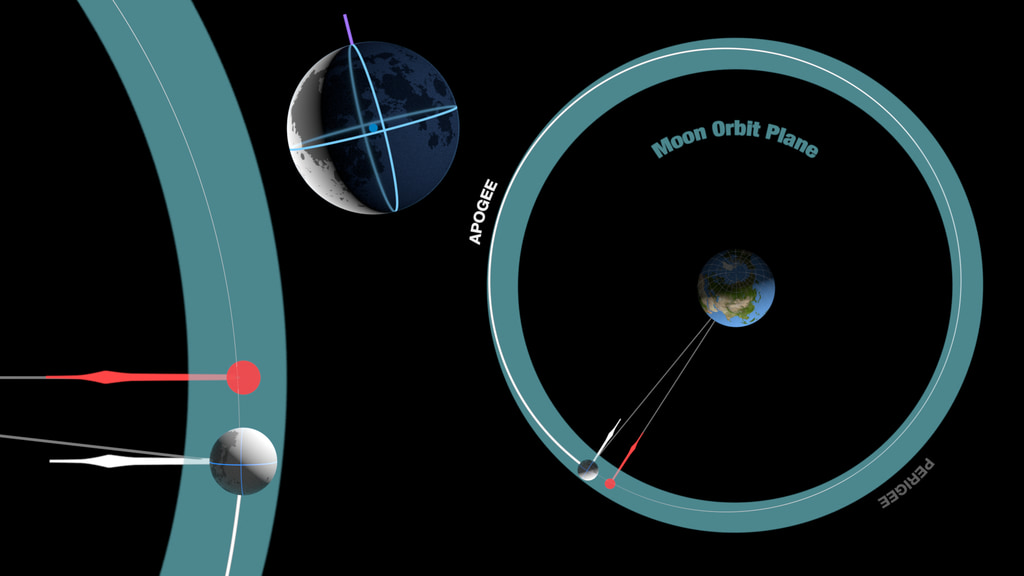Moon Essentials: Libration in Latitude

A 2-frame GIF showing the extremes of lunar libration in latitude.
Libration in latitude is an apparent north-south, up and down rotation of the Moon, as if the Moon were slowly nodding its head "yes." This motion slightly changes the Moon's face as seen from Earth, revealing parts of the north and south poles. This repeats in a cycle lasting about 27.32 days, the average time it takes the Moon to complete an orbit relative to the stars (the sidereal month).
The visualization on this page shows how libration in latitude is mostly an effect of the tilt of the Moon's orbit relative to its equator. The angle between these two planes is 6.68°. In the first half of the animation, the Moon's orbit is tilted while its equator is nearly horizontal, supporting the notion that we are slightly above or below the Moon. But this is a matter of perspective. In the second half of the animation, the orbit is horizontal while the Moon's equator is tilted, giving the impression that the Moon's orientation and not our relative position is responsible for the polar reveals.
Libration in latitude is defined by an angle, the latitude component of the sub-Earth point. This is the lunar latitude at which the Earth is directly overhead, or the latitude line passing through the center of the Moon's disk as seen from Earth. This point is marked with a blue dot on the lunar globe in the lower half of the animation.
Libration in latitude shown in two parts: an edge-on view of the Moon's tilted orbit, and a Moon globe with subsolar and sub-Earth points.
Credits
Please give credit for this item to:
NASA's Scientific Visualization Studio
Visualizer
- Ernie Wright (USRA)
Technical support
- Laurence Schuler (ADNET Systems, Inc.)
- Ian Jones (ADNET Systems, Inc.)
Release date
This page was originally published on Monday, June 24, 2024.
This page was last updated on Monday, December 4, 2023 at 11:42 AM EST.
Missions
This visualization is related to the following missions:Series
This visualization can be found in the following series:Datasets used in this visualization
DE421 (JPL DE421)
ID: 752Planetary ephemerides
This dataset can be found at: http://ssd.jpl.nasa.gov/?ephemerides#planets
See all pages that use this dataset
Note: While we identify the data sets used in these visualizations, we do not store any further details, nor the data sets themselves on our site.
